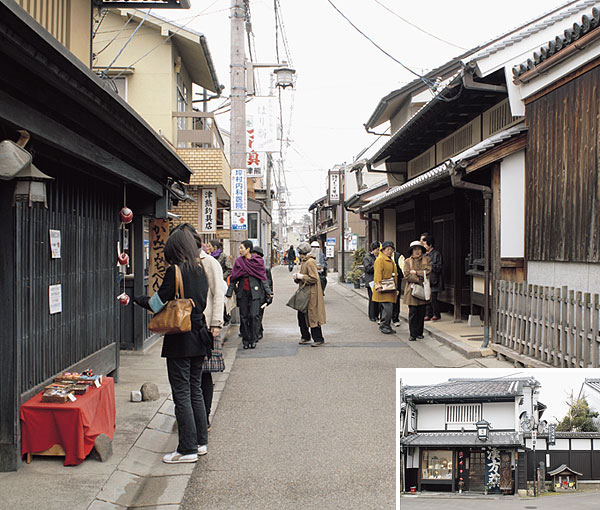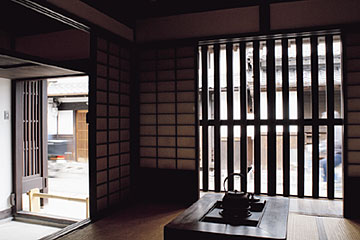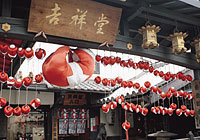Japan Travelogue NARA
Today, the two old capital cities of Nara and Kyoto are favorite destinations for tourists in Japan. Nara's role as the national capital began about 1,300 years ago, in the northern part of the Nara Basin. Called Heijokyo in those days, the city was laid out on a grid pattern, something like a checkerboard, modeled on the capital city of China, Chang'an (Xian). In the eastern part of Heijokyo, the national government and powerful aristocrats funded the establishment of many Buddhist temples and Shinto shrines. Many remain to this day, and in 1998 some were added to UNESCO's World Heritage List. These are: Todai-ji Temple, popularly known as Nara no Daibutsu-san (“The Great Buddha of Nara”); Kofuku-ji Temple, with its beautiful five storied pagoda; Kasuga Taisha Shrine, a quiet spot surrounded by an old-growth forest; and Gango-ji Temple, which has the oldest roof tiles in Japan.
After only a little more than 80 years, the capital was moved to nearby Kyoto. But many temples and shrines lived on in the eastern part of the former capital, and a district known as Nara-machi continued to thrive. In Nara-machi, still known for its old buildings and streets, artisans worked close to one another, doing work for temples and shrines. At ateliers near Todai-ji and Kofuku-ji temples, they continued to make Buddhist statues and the ink sticks and brushes needed to copy Buddhist scriptures. Nara's economy had its ups and downs over the centuries, but artisans have continued to carry on the family businesses from one generation to the next, down to the present day.
I took a train from Kyoto and got off 30 minutes later at Kintetsu Nara Station. To start off, I decided on a stroll to Nara-machi, southeast of the station. About 15 minutes later, I found myself beyond the five-storied pagoda of Kofuku-ji Temple, walking beside Sarusawa Pond toward the old artisans' district.
Nara-machi is small and you can see much of it in an hour. The houses, once owned by merchants, are long and narrow, with very little frontage (the width of the building) because land taxes used to be based on the frontage. This makes for a quite distinctive cityscape and atmosphere.
Walk along the maze of small streets and you may see migawari-zaru, red cloth charms hanging under the eaves of homes and shops to protect the people inside from disaster.
Many ateliers here still make the ink sticks and brushes once used to copy Buddhist scriptures (they are now used primarily for calligraphy practice). One atelier, Kobaien, stands out from the rest. It has been making ink sticks for more than 400 years.
Itani Teruo, the sales manager, took me around the store, which had a good display of the company's ink sticks, then took me to the atelier to see the work in progress. Artisans burn an oil, collect the soot, mix it with a natural adhesive, then form the mixture into sticks and dry it. They were smudged in black all over—some use their bare hands and feet to mix the soot with the adhesive and knead it, while others handle it before placing it in molds.
They certainly were a dedicated bunch of workers. We watched for a while, and then Itani smiled proudly: “It's hard work, and getting covered in soot makes it harder, but we all get a real sense of satisfaction from the final product—when you rub the ink stick in a bit of water in an ink stone, the light shining on the pitch black ink shimmers, something like a rainbow.”

Left: Thousands of ink sticks hanging on straw ropes in the drying room of the Kobaien Atelier. They remain like this to dry for about three months.
Center: Soot from burned oil is mixed with an adhesive, then kneaded thoroughly with bare feet.
Right: A sample of ink sticks made at the Kobaien Atelier. These ones are decorated with gold and silver powder.

A stroll through Nara-machi will take you into old Japan, past shops that have been in business for many years. They specialize in traditional items like mosquito nets, pickles, Japanese sweets, and (below right) Oriental herbal medicine.

Interior of the Nara-machi Latticework House, a reconstructed merchant's house originally built in the middle of the 1800s.

Gango-ji Temple is now a quiet spot in Nara-machi, visited mainly by parishioners from the local community. During the Nara period (710-794), though, it was an important and powerful religious institution.

Migawari-zaru charms hanging above the entrance to the Nara-machi Museum. Walk inside to see exhibits of everyday items from another era, and old art objects.